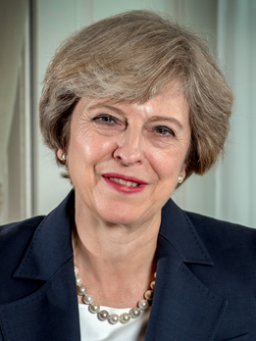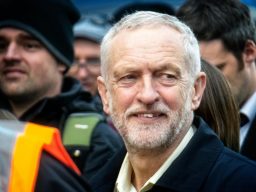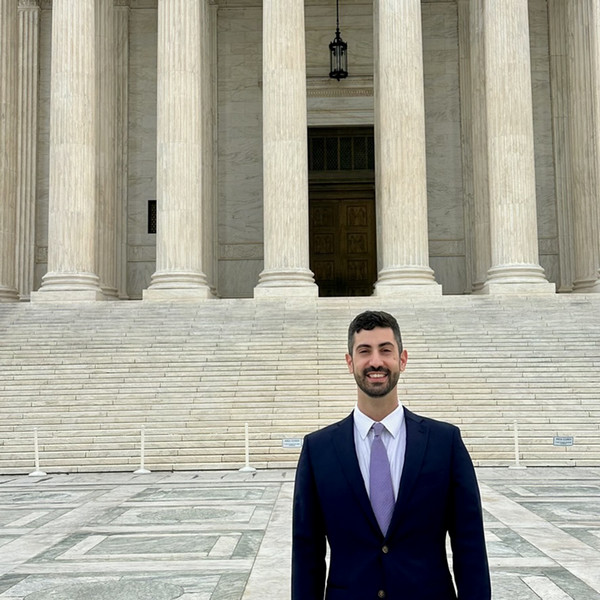UK Politics: May’s Election ‘Gamble’ Explained by Bowdoin’s Henry Laurence
By Tom Porter
It was the political gamble that didn’t pay off. Last week’s snap election in the UK was called by Prime Minister Theresa May in April in the hope that it would increase her parliamentary majority and thereby strengthen her negotiating hand going into Brexit negotiations with the European Union next week. But, it backfired, and May ended up with what’s called a hung parliament, with not enough seats to secure a majority. The ruling Conservative Party ended up with 318 seats out of a total of 650, down from a previous tally of 331.
So what now for Prime Minister May? How will she form a government? And what might this mean for Brexit? Government professor Henry Laurence, who next spring will be teaching a class in British politics, shared some of his insight.
Why is the UK able to hold snap elections?
Unlike the US, the UK has an uncodified constitution, and while there are various laws concerning elections, the Prime Minister has traditionally been able to call elections when he or she wishes. Britain took a step away from this in 2011, however, and moved towards the American model when Prime Minister David Cameron passed the Fixed-term Parliaments Act, requiring that elections would be held on a set day every five years.
But one of the first things you learn in my British politics class is that Parliament is sovereign and can do what it wants if enough legislators are on board. So one of the exceptions to the Fixed-term Parliaments Act is that if two-thirds of MPs agree on an early election, it can happen. And that’s what occurred here.

Why did Theresa May want to hold an election barely a year after assuming office and just two years after the previous general election?
One of the things that happened after the previous election, in 2015, was the Brexit referendum in which Britons voted to leave the EU. This led to David Cameron’s resignation and May took over as Prime Minister. With some tough negotiating ahead, and with the opinion polls showing little support for the opposition Labour Party, May thought this would be a good opportunity to hold a snap election and increase the Conservative majority in Parliament, thus giving her a stronger mandate in Brexit talks.
Indeed just a few months ago the Labour Party did look weak and divided. Leader Jeremy Corbyn was widely regarded as an unelectable relic, a traditional socialist “lefty” from the 1970s with ties to all sorts of disreputable groups. Furthermore he was not popular within his own parliamentary party, who tried to remove him as leader last summer.
May saw this snap election as an opportunity to destroy the Labour Party while it was weakened, before it came to its senses and appointed someone more electable as leader. But it didn’t work out like that, as we know.
Why did it go so wrong for her?
May made a couple of big mistakes, in my opinion. Firstly, by calling a snap election when she didn’t need to, she personalized the election and made it about her. A lot of voters saw this as pure political opportunism, and began to wonder what she stood for, other than herself (especially as she had originally been against Brexit in 2016).
Some of her party’s policy proposals were also unpopular, most notably the plan to change the way long-term elderly care was paid for. Economically speaking this issue is important and worthy of debate, but coming when it did it was political suicide, guaranteed to alienate many older voters, including traditional Tory supporters. It was dubbed “the dementia tax.”
In the uproar that ensued, May did a U-turn and dropped this proposal from her manifesto because of its unpopularity. This made her look weak and quite the antithesis of the “strong and stable” image she was trying to portray for the Conservative Party.

Did Jeremy Corbyn do anything himself to increase his popularity or did he just sit there and watch May make mistakes?
Corbin also took the initiative. He clearly heeded some advice about campaigning and worked on his image: he started smiling more, he seemed more relaxed, he wore smarter clothes. Also, in the eyes of many voters, here was a man who knew what he stood for. Even if you didn’t agree with him, he was genuine. Whereas May, as I just explained, was seen less and less in those terms.
Some comparisons are made between Corbyn and Sen.Bernie Sanders in the US, and there are indeed some similarities. Like Sanders, Corbyn harnessed the anti-establishment protest vote. He also mobilized the youth vote, and that’s really the big story with Corbyn. There was, approximately, a 70 percent youth turnout last week, which compares to a 50 percent turnout in the US presidential election.
What now for Theresa May?
Let’s not forget that she still actually won the election with a plurality of the vote. But with less than a clear majority, she now faces a hung parliament and needs to put a government together.
She’s currently working on what’s called a “confidence and supply” deal with the Democratic Unionist Party: one of the two parties from Northern Ireland represented in Westminster. This deal falls short of a formal coalition, as the two parties would likely not be able to agree on a joint manifesto. What Theresa May wants is for the DUP’s ten MPs to vote with the Conservatives, thereby giving them the majority. What the DUP will get in return is still being negotiated.
What are the implications for Brexit?
The conventional wisdom, which I tend to agree with, is that the election will mean a “softer” Brexit, meaning the EU will be able to exact some concessions from the UK, possibly on immigration or movement of people, in return for Britain having some access to European markets.
Before the election, May was prepared to do a “hard” Brexit and leave the EU with no agreement in place if she couldn’t get the right deal. This now looks less likely.
Paradoxically, May’s current weakened position may actually make for smoother negotiations with Europe. The British government will now be approaching the exit talks, which are due to start on June 19, with a much greater degree of humility, Theresa May is in such a constrained position politically that her bargaining positions may appear more credible to the EU. European negotiators will know she’s likely to be telling the truth, rather than hiding anything up her sleeve.



